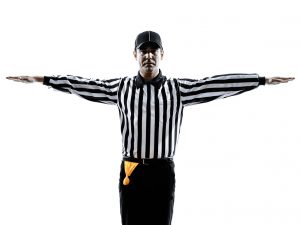 California law has long held that an insurer may not use declaratory relief or other tactics to prejudice the defense of its policyholder in an underlying lawsuit. But in their zeal to avoid coverage, and despite California Supreme Court precedent, insurers sometimes employ tactics that actually increase their policyholder’s risk of liability in the underlying action, contrary to the very purpose of liability insurance. That was the case in the coverage action between football helmet manufacturer Riddell and its liability insurers, which is pending in California state court, where certain London Market Insurers tried to require the production of extensive discovery before that substantially identical production took place in the underlying product liability action.
California law has long held that an insurer may not use declaratory relief or other tactics to prejudice the defense of its policyholder in an underlying lawsuit. But in their zeal to avoid coverage, and despite California Supreme Court precedent, insurers sometimes employ tactics that actually increase their policyholder’s risk of liability in the underlying action, contrary to the very purpose of liability insurance. That was the case in the coverage action between football helmet manufacturer Riddell and its liability insurers, which is pending in California state court, where certain London Market Insurers tried to require the production of extensive discovery before that substantially identical production took place in the underlying product liability action.
Riddell is a defendant in numerous lawsuits brought by former professional football players who allege that they suffered long-term neurological damage from head injuries sustained while wearing Riddell football helmets. The lawsuits have been consolidated in a federal multidistrict proceeding, or “MDL,” in Pennsylvania federal court, where all discovery has been stayed until certain threshold legal issues are resolved.
Riddell filed the coverage action against its liability insurers seeking a defense in the MDL and coverage for any resulting settlements or judgments. The insurers refused to defend Riddell, asserting numerous defenses to coverage. Of particular significance, the insurers alleged that Riddell “expected or intended” the injuries suffered by the MDL plaintiffs, and that Riddell had prior knowledge of the alleged injuries but failed to disclose that knowledge in it insurance applications. These are standard defenses that insurers raise in coverage actions. But unlike defenses such as “late notice,” or “failure to cooperate,” these defenses involve factual issues that are being litigated in the underlying action. Indeed, they depend on the underlying plaintiffs actually proving their alleged injuries.
Notwithstanding that no discovery had taken place in the MDL, the insurers in the coverage action sought discovery from Riddell on issues such as whether and when the former player wore Riddell helmets, and the model worn when they were injured, all with the aim of supporting their coverage defenses and avoiding their duty to defend. (In California, facts extrinsic to the complaint can negate the duty to defend, but only if they are undisputed and conclusively eliminate the potential for coverage.)
In a recent decision, a California appellate court relieved Riddell of the obligation to respond to these requests. The court ruled that where the discovery sought by the insurer in the coverage action was intimately related to factual issues affecting the policyholder’s liability in the underlying action, a protective order was inadequate to protect the policyholder from the risk that a finding in the coverage action could prejudice the policyholder’s defense in the underlying action. Upon reviewing prior California Supreme Court and other appellate court decisions, the court summarized the state of the law as follows:
[A]n insurer cannot, over the insured’s objection, use a declaratory relief action as a forum to litigate factual issues affecting the insured’s liability in the underlying action. Rather, such issues must be litigated in the underlying action. If the allegations in that action, together with the facts known to the insurer, show a potential for coverage, then the insurer must provide a defense to that action. If, in the course of defending that action, the insurer learns of additional, undisputed facts that conclusively eliminate the potential for coverage and thus negate the duty to defend, then the insurer may seek declaratory relief on that basis. But the insurer cannot use the discovery process in the declaratory relief action to investigate or develop those facts if they are logically related to issues affecting the insured’s liability. Rather, that factual investigation and development must take place in the underlying litigation, where any insurer with a duty to defend should be paying for the insured’s defense, including discovery costs.
In short, when playing defense, the insurer must defend: it can’t seek to block and tackle its own policyholder teammate in the underlying “game.”
 Policyholder Pulse
Policyholder Pulse


